Club Events

How do I join a celebrity book club ?
Joining a celebrity book club can be an exciting way to connect with your favorite stars and share your love of reading. Here are some steps to help you get started: ## Step 1: Research Celebrity Book Clubs First, you need to find out which celebrities have book clubs and what kind of books they read. You can do this by searching online or following them on social media platforms like Twitter, Instagram, or Facebook. Some popular celebrity book clubs include Oprah's Book Club, Reese Witherspoon's Hello Sunshine Book Club, and Emma Watson's Our Shared Shelf. ## Step 2: Follow the Celebrity Book Club Once you've found a celebrity book club that interests you, make sure to follow it on social media or subscribe to their newsletter if they have one. This will ensure that you stay up-to-date on their latest picks and any events or discussions related to the club. ## Step 3: Read the Books The next step is to start reading the books that are chosen by the celebrity book club. Make sure to keep track of your thoughts and reactions as you read, as this will come in handy later when discussing the book with other members of the club. ## Step 4: Participate in Discussions Many celebrity book clubs host discussions about their picks, either through social media or on their website. Make sure to participate in these discussions by sharing your thoughts and engaging with other members of the club. This is also a great way to connect with other fans of the book and potentially even the celebrity themselves! ## Step 5: Attend Events (If Applicable) Some celebrity book clubs may host events such as book signings or meet-and-greets with the author. If possible, try to attend these events to further immerse yourself in the world of the book and meet other fans and potentially even the celebrity themselves!

How to start a new extracurricular club at school ?
Starting a new extracurricular club at school can be an exciting and rewarding experience. It allows you to pursue your interests, meet new people, and develop leadership skills. Here are the steps to follow: 1. Identify your interests and goals for starting the club. What do you want to achieve? Is it to learn a new skill, share your passion with others, or make a difference in your community? Having a clear vision will help you stay motivated and focused throughout the process. 2. Research existing clubs at your school to see if there are any similar groups already in place. This will help you determine if there is a demand for your proposed club and what unique aspects you can bring to it. 3. Gather support from other students who share your interests and goals. Talk to them about your idea and ask if they would be interested in joining. You can also seek advice from teachers or staff members who may have experience starting clubs. 4. Create a proposal that outlines the purpose, goals, and structure of your club. Include details such as meeting times, membership requirements, and potential activities. Make sure your proposal is well-organized and clearly communicates your vision. 5. Submit your proposal to the appropriate person or committee at your school. This may vary depending on your school's policies and procedures. Be prepared to answer questions and provide additional information if needed. 6. Once your proposal is approved, start recruiting members by spreading the word through posters, social media, and word of mouth. Host an interest meeting or event to introduce potential members to your club and its activities. 7. Plan activities and events that align with your club's goals and interests. This could include workshops, guest speakers, service projects, or competitions. Make sure to involve your members in planning and decision-making processes. 8. Promote your club through various channels such as school announcements, newsletters, and social media platforms. Attend school events and showcase what your club does to attract more members and raise awareness. 9. Regularly evaluate your club's progress and adjust accordingly. Solicit feedback from members and stakeholders to improve and ensure that your club continues to meet its goals and objectives.

How can I find a sports club or group in my area to join ?
Finding a sports club or group in your area can be an exciting and rewarding experience. To help you find one, follow these steps: 1. Determine your interests by identifying the sports or activities that interest you. 2. Research online using directories like Sports Club Finder, Meetup, and Facebook Groups. 3. Check local recreation centers and parks for available options. 4. Ask friends, family members, or coworkers for recommendations. 5. Attend local sporting events to interact with other athletes and learn about nearby clubs. 6. Join online forums and social media groups dedicated to specific sports. 7. Be open to trying new things and exploring different sports or activities.

What is a celebrity book club ?
Celebrity book clubs are groups led by famous people or public figures to discuss books. These clubs aim to promote reading and encourage exploration of new genres and authors. Features include leadership by a well-known personality, open membership, varied book selection, flexible discussion formats, and active engagement through social media. Benefits of joining such clubs include exposure to new genres, networking opportunities, enhanced reading experience, and access to celebrity insights. Overall, celebrity book clubs offer a unique way to broaden literary horizons and connect with fellow readers.

What are some tips for starting a successful celebrity book club ?
Starting a celebrity book club requires careful selection of celebrities and books, promotion on social media, encouraging participation, and offering incentives.

How can seniors who are new to an area use local sports clubs as a way to meet people and build friendships ?
Moving to a new area can be challenging, especially for seniors leaving behind long-standing friendships. Joining local sports clubs is an excellent way to meet people and build new friendships. Here's a step-by-step guide on how seniors can use sports clubs for social connection: 1. **Research Available Clubs**: Start by finding out which sports clubs are available through online searches, local newspapers, community bulletin boards, or by asking neighbors. Look for sports that suit individual interests and physical abilities, such as golf, bowling, swimming, Tai Chi, walking clubs, or dance classes. 2. **Attend Open Days or Trial Sessions**: Many clubs offer open days or free trial sessions, allowing seniors to experience the club atmosphere, meet current members, and try out the sport without commitment. 3. **Join Regular Activities**: Once a suitable club and sport have been identified, becoming a regular member is crucial. This involves signing up for membership, attending scheduled activities consistently, and participating in club events and social gatherings. 4. **Engage Socially Within the Club**: To build friendships within the club, introduce yourself to other members, show interest in their experiences, invite them for coffee or meals after activities, and join or organize social events outside of sporting activities. 5. **Volunteer or Help with Club Activities**: Active involvement in the club's functioning can deepen connections. Offer to help with organizational tasks, volunteer for events, and share skills or expertise with the group, such as coaching or officiating. 6. **Stay Open and Positive**: A positive attitude is key in building new friendships. Be open to meeting people from diverse backgrounds, maintain a friendly demeanor, and embrace new experiences while enjoying the journey. By following these steps, seniors can use local sports clubs as a platform to engage in physical activities and forge new friendships, becoming an integral part of their new community.

How do fan support events differ between music genres or cultures ?
The text discusses the variations in fan support events across different music genres and cultures. It highlights how these events differ in terms of concert tours, meet and greets, signings, fan clubs, and online communities. The examples provided illustrate the unique traditions and practices associated with each genre or culture, showing how artists connect with their audiences in diverse ways.

What are the most popular extracurricular activities in high school ?
The text discusses the various extracurricular activities available in high school. These activities provide opportunities for students to pursue their interests, develop new skills, and build relationships outside of the classroom. The most popular activities include sports, music and theatre, academic clubs, community service and volunteering, hobby and special interest clubs, and athletic support groups. Participating in these activities can help students discover their interests, build character, and create lasting memories.

What are the benefits of joining a celebrity book club ?
Joining a celebrity book club offers exclusive content, guided reading experiences, community connections, personal growth opportunities, and inspiration. It enriches the reading experience and fosters empathy, critical thinking, and communication skills.

How can I meet new people through sports ?
How to Meet New People through Sports Meeting new people who share your passion for sports can be a fun and rewarding experience. Here are some ways to do it: 1. Join a sports club or league: This is one of the best ways to meet new people who share your interest in sports. There are many different types of clubs and leagues available, so you can find one that suits your skill level and interests. You can also participate in tournaments and events organized by the club, which will give you more opportunities to interact with other members. 2. Attend local sporting events: Attending local sporting events is another great way to meet new people who enjoy sports. You can go to games or matches of your favorite teams and strike up conversations with other fans. You can also volunteer at these events, which will allow you to meet people while contributing to the community. 3. Take up a new sport: Taking up a new sport is not only good for your physical health but can also help you meet new people. Joining a beginner's class or group lesson is a great way to learn a new sport while meeting others who are also learning. As you progress in your skills, you may have the opportunity to join more advanced groups or teams. 4. Participate in online sports communities: Online sports communities are a great way to connect with people from all over the world who share your passion for sports. You can join forums, chat rooms, or social media groups related to your favorite sports. Participating in online discussions and events can help you build relationships with other sports enthusiasts. 5. Host or attend watch parties: Hosting or attending watch parties for big games or tournaments is a fun way to meet new people who love sports as much as you do. Invite friends, family, and colleagues to watch the game together and encourage them to bring their own friends along. This can create a sense of camaraderie among everyone involved and lead to lasting friendships.

Are there any luxury resorts that cater specifically to families ?
**Luxury Resorts for Families: A Summary** There are numerous luxury resorts worldwide that cater specifically to families, offering a blend of amenities and activities designed to make your family vacation as enjoyable and stress-free as possible. Here's a summary of some top picks: 1. **Four Seasons Resort Orlando at Walt Disney World** - offers spacious family suites, multiple swimming pools, and character dining. 2. **Atlantis Paradise Island** - features Aquaventure Waterpark and Dolphin Cay, along with over 20 restaurants. 3. **Club Med Sandpiper Bay** - provides all-inclusive packages, sports academies, and kids' clubs for various age groups. 4. **Disney's Grand Californian Hotel & Spa** - grants access to Disney parks and offers Mickey Mouse pancakes at breakfast. 5. **The Ritz-Carlton, Naples** - boasts five-star service, beachfront location, and children's programming through Ritz Kids Club. 6. **Soneva Fushi** - offers overwater bungalows, private beaches, and eco-conscious luxury experiences. 7. **Amangiri** - features desert oasis setting, expansive swimming pools, and PADI dive center for family adventures underwater. 8. **The Brando** - located on Tetiaroa Private Island in French Polynesia, it offers luxury villas with private pools and coral reefs for snorkeling and diving. 9. **Viceroy Bali** - situated in Ubud, Bali, it provides jungle or rice paddie views from villas and onsite spa treatments for both adults and children alike. 10. **Rosewood Mayakoba** - set in Riviera Maya, Mexico, it offers a tropical paradise setting with secluded beaches and cenotes (natural swimming holes), along with family-friendly suites with plunge pools or swim-up bars.
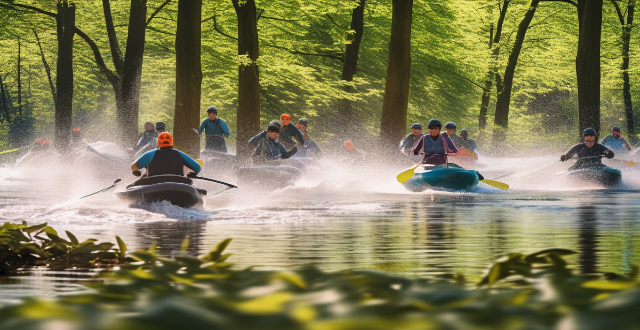
What are some popular social activities that involve physical exercise ?
Popular Social Activities Involving Physical Exercise include community sports leagues, outdoor adventure groups, fitness classes, cycling and running events, water sports, winter sports, gym partners, and community challenges. These activities promote physical health while fostering social connections and a sense of community.

Which celebrities have their own book clubs ?
Book clubs have become increasingly popular in recent years, and many celebrities have jumped on the bandwagon by starting their own. Here are some notable examples: - **Oprah Winfrey**: Oprah's Book Club, started in 1996, has recommended over 70 books that often become bestsellers. - **Reese Witherspoon**: Reese's Book Club, launched in 2017, focuses on promoting diverse voices, particularly women writers. - **Emma Watson**: Our Shared Shelf, created in 2016, shares one book per month celebrating or exploring women's issues. - **Sarah Jessica Parker**: SJP's Picks, a collaboration with Books-A-Million, includes contemporary and classic reads. - **Jenna Bush Hager**: Read With Jenna, hosted on the Today show, features books that have touched her personally. - **Emily Henry**: Author Emily Henry shares favorite reads across various genres in her book club. - **Celebribookies**: A website tracking book recommendations of various celebrities, not a single celebrity's book club. These celebrity book clubs help promote reading and support authors by sharing their passion for literature.
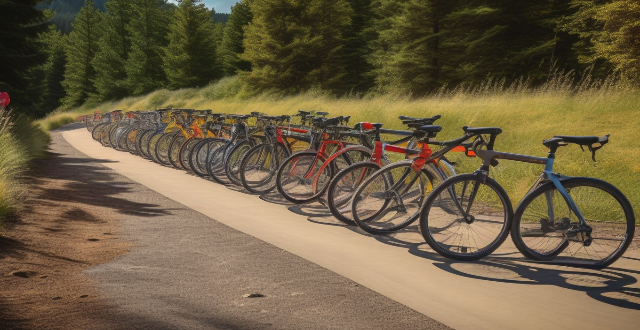
Are there any events or clubs that organize group cycling trips on specific routes ?
There are many events and clubs that organize group cycling trips on specific routes, providing opportunities for cyclists to explore new places, meet other riders, and enjoy shared experiences. Examples include the Gran Fondo World Championships, Tour de Cure, RAAM, local cycling clubs, bike shops, and online communities like Strava, Facebook, and Meetup. These organizations offer a range of rides and races, from beginner to advanced levels, and cater to different interests such as road biking, mountain biking, and fundraising.

Where can I get a free meal on my birthday ?
**Where Can I Get a Free Meal on My Birthday?** If you're looking for a free meal on your birthday, several restaurants and chains offer birthday deals. Here are some popular options: - **Dairy Queen**: Sign up for the Blizzard Fan Club and get a coupon for a free Blizzard treat. - **IHOP**: Join the Pancake Revolution eClub and receive a free stack of pancakes. - **Red Lobster**: Sign up for the Fresh Catch Club and get a coupon for a free appetizer or dessert. - **Olive Garden**: Join the eClub and receive a coupon for a free dessert. - **Panda Express**: Sign up for emails and receive a coupon for a free entree. - **Baskin-Robbins**: Sign up for the Birthday Club and receive a coupon for free ice cream. - **Aunt Lois' Micro Bakery**: Sign up for their newsletter and receive a coupon for a free scone. - **California Pizza Kitchen**: Join the CPK Rewards program and receive a coupon for a free small plate. - **Chevys Fresh Mex**: Sign up for Chevys Rewards and receive a coupon for a free entrée. Make sure to check the terms and conditions of each offer and sign up in advance to ensure you receive your coupons before your birthday.
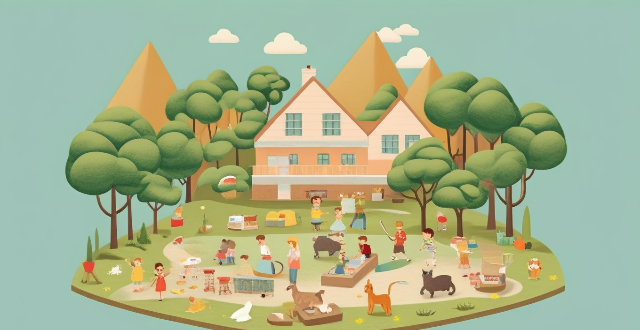
What are the most child-friendly hotels or resorts for a family trip ?
When planning a family trip, it's important to choose accommodations that cater to the needs of both adults and children. Some of the most child-friendly hotels or resorts for a family trip include Club Med Resorts, Disney Resorts, Beaches Resorts, Great Wolf Lodge, Aulani, A Disney Resort & Spa, and Four Seasons Resorts. These properties offer amenities such as kid-friendly pools, water parks, supervised clubs, and cultural experiences. When choosing a hotel or resort for your family trip, consider factors such as location, amenities, activities, and overall atmosphere. Look for properties that offer supervised kids' clubs, family-friendly restaurants, and opportunities for both parents and children to relax and have fun together.

How can networking events help me enhance my personal image ?
Attending networking events can significantly enhance your personal image by establishing industry presence, expanding professional circles, offering learning opportunities, showcasing expertise, and building a positive reputation. To make the most out of these events, dress appropriately, be prepared with an elevator pitch, practice active listening, follow up with connections, and contribute value whenever possible. These strategies not only improve your professional image but also open doors to new opportunities and collaborations.

What are some examples of recent extreme weather events ?
This article discusses recent examples of extreme weather events that have caused significant damage to human life, property, and the environment. These include Hurricane Ida (2021), Australian Bushfires (2019-2020), California Wildfires (2020), European Heatwave (2019), Japanese Typhoon Hagibis (2019), and Indian Cyclone Amphan (2020). The article concludes by emphasizing the need for individuals, communities, and governments to take action to mitigate the effects of these events and adapt to changing weather patterns.

How can extreme weather events caused by climate change affect the scheduling of sporting events ?
The text discusses the impact of extreme weather events caused by climate change on the scheduling of sporting events. It highlights how these events can lead to cancellations or postponements, changes in venue conditions, travel disruptions, and reduced fan attendance. The text emphasizes the need for sports organizations and venues to develop strategies for dealing with these challenges to ensure the safety and enjoyment of all those involved in sporting events.

What are the benefits and drawbacks of virtual fan support events compared to in-person events ?
Virtual fan support events provide global accessibility, cost-Virtual fan support events provide global accessibility, cost- benefits but face challenges like limited cost-effectiveness, and safety benefits but face challenges like limited personal interaction and technical issues. Finding a balance between virtual and in-person events is crucial for meaningful connections.

How do celebrity book clubs differ from regular book clubs ?
Celebrity and regular book clubs both aim to promote reading but differ in their goals, accessibility, interaction style, and impact on readers and authors. Celebrity clubs are open, use social media, and have a wide reach, while regular clubs are more private, engage in deeper discussions, and foster close-knit communities.
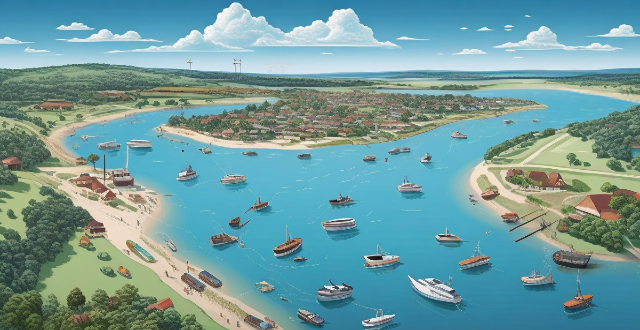
How do extreme weather events influence biodiversity and ecosystems ?
Extreme weather events, such as flooding, drought, and heatwaves, significantly impact biodiversity and ecosystems. These events can cause habitat loss, species adaptation, and altered ecosystem structure and functioning. It is crucial to understand these impacts and take action to mitigate them through conservation efforts and climate change adaptation strategies. By doing so, we can help protect our planet's diverse flora and fauna and ensure the continued health of our ecosystems for future generations.

What impact do extreme weather events have on consumer purchasing habits ?
Extreme weather events, such as hurricanes, floods, and heatwaves, significantly impact consumer purchasing habits. These changes in buying behavior are often driven by necessity, fear, and the desire to be prepared for future events. The text discusses the various ways extreme weather events can influence what and how consumers purchase. It also highlights the need for businesses and retailers to adapt to meet the changing demands and priorities of their customer base.
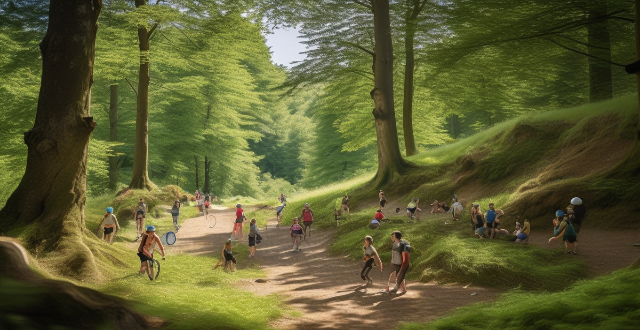
Can sports events promote peace between nations ?
Sports events can promote peace between nations by breaking down barriers, fostering cultural exchange, and providing a platform for diplomatic engagement. Historical and modern-day examples show the potential of sports diplomacy, but challenges such as political interference and commercialization must be considered. Overall, sports have the power to bring people together and promote understanding, making them a valuable tool for promoting peace.
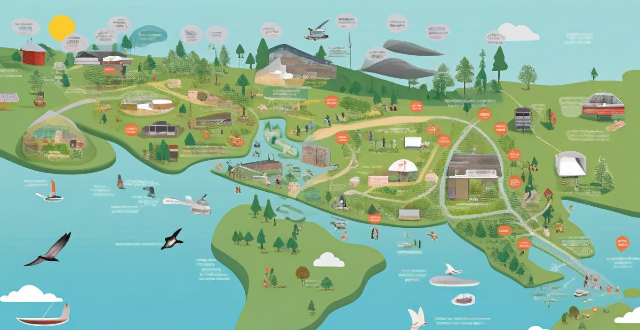
How do extreme weather events affect global climate change ?
Extreme weather events, such as hurricanes, floods, droughts, and heatwaves, have a significant impact on global climate change. They can exacerbate existing climate conditions and contribute to the overall warming of the planet by increasing greenhouse gas emissions, affecting ecosystems and biodiversity, disrupting agriculture and food production, and impacting human health and well-being. It is essential that we work together to mitigate the effects of extreme weather events and address the root causes of climate change to ensure a sustainable future for all.
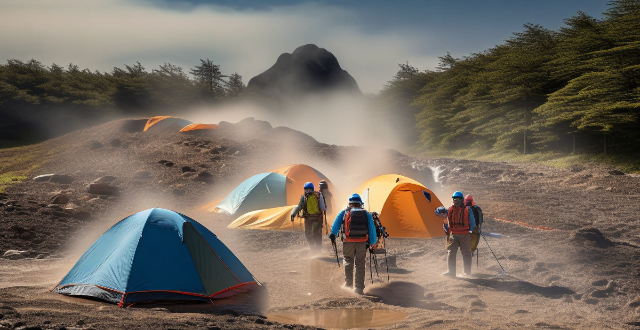
How can we predict and prepare for extreme weather events ?
Predicting and preparing for extreme weather events is a critical aspect of modern society. With advancements in technology and scientific research, we now have the ability to forecast these events with greater accuracy than ever before. However, predicting and preparing for extreme weather events requires a multi-faceted approach that involves both scientific knowledge and practical preparation. In this article, we will explore some of the key ways in which we can predict and prepare for extreme weather events.

What are the best types of exercises for seniors to improve their social lives ?
As seniors age, it becomes increasingly important to stay active and engaged in their communities. One way to do this is by participating in physical activities that not only improve their health but also provide opportunities for social interaction. Here are some of the best types of exercises for seniors to improve their social lives: 1. Walking Clubs 2. Yoga or Tai Chi Classes 3. Water Aerobics 4. Dance Classes 5. Group Fitness Classes 6. Sports Leagues or Clubs
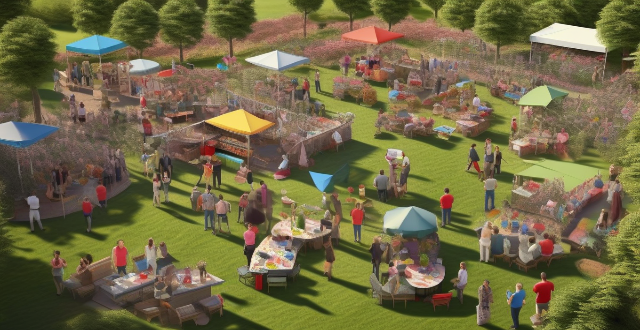
How do fan support events impact an artist's success and popularity ?
Fan support events play a crucial role in shaping an artist's success and popularity by increasing visibility, strengthening fan loyalty, providing monetization opportunities, and enhancing reputation and credibility. These events offer platforms for fans to connect with artists, generate media coverage, create social media buzz, foster personal connections, offer exclusive experiences, sell merchandise, increase ticket sales, gain industry recognition, and influence critic opinions. Overall, fan support events are essential components of an artist's career development strategy.

What are the main causes of extreme weather events ?
Extreme weather events, such as hurricanes, tornadoes, floods, and droughts, are caused by a combination of natural climate variability, human activities, and changes in the Earth's climate system. Natural climate variability includes phenomena like El Niño and La Niña, which can cause extreme weather conditions around the world. Human activities, such as greenhouse gas emissions, land use changes, and pollution, also play a significant role in causing extreme weather events. Changes in the Earth's climate system, such as sea level rise, ocean acidification, and changes in atmospheric circulation patterns, can also contribute to extreme weather events. Addressing both the underlying causes and implementing adaptation strategies is important to mitigate the impacts of these events.
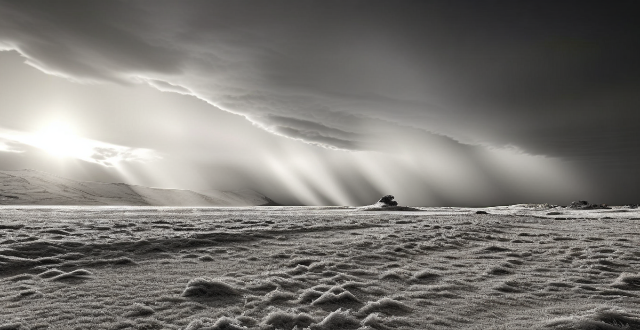
How do extreme weather events relate to climate change ?
Extreme weather events, such as hurricanes, heatwaves, floods, and droughts, have become more frequent and intense in recent years due to climate change caused by human activities. Climate change leads to increased temperatures, changes in precipitation patterns, stronger storms, and impacts on ecosystems. Examples of extreme weather events linked to climate change include Hurricane Sandy, Australian Bushfires, European Heatwaves, and the Indian Ocean Dipole. It is crucial to take action to mitigate the effects of climate change and adapt to the changing climate.